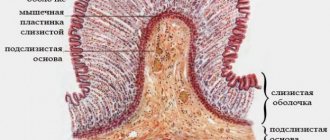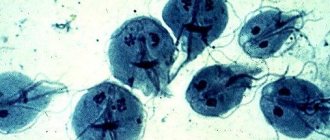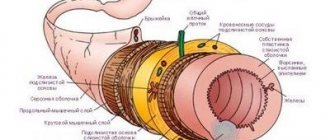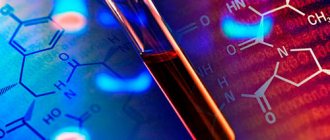Green stool in a child always causes great anxiety in mothers. However, believe it or not, green stool in a child, especially a very young one, is absolutely normal. And it does not indicate any serious health problem. Familiarizing yourself with information about where green stool comes from in babies will prevent you from panicking. And it will help you quickly take control of the situation.
curejoy.com
Being a parent is not only about experiencing happy moments, but also a lot of worries and worries related to the baby’s health, for example, your child suddenly has green stool. Green feces and isolated cases of green stool in your baby may have several causes. Let's look into the issue.
Green stool in a child: 7 reasons for the terrible green on diapers
Meconium in newborns as a cause of green stool
During the first days of life, newborn babies leak meconium from their intestines. It is also called original feces. It is black with a greenish tint.
Meconium contains amniotic fluid, bile, mucus, water, and epithelial cells. This sterile, odorless stool gradually turns yellow-green in color over the first 3-4 days of breastfeeding.
A nursing mother's menu may cause green stool
Eating large amounts of green vegetables or drinks tinted with green food coloring changes the color of breast milk and therefore causes green stools in the baby.
Green stool in infants caused by dietary habits
As your baby develops, you begin to feed him. If it's green vegetables, he will pass green stool.
Green mucus in a baby's stool as a signal of infection
By carefully examining your child's stool, you may notice the presence of viscous, shiny green streaks. This indicates mucus in the baby's stool. It usually appears when there is excessive drooling or during the baby's teething period.
If such a stool is repeated more than once, this may be a signal of infection or a symptom of some disease. Medical advice required.
Your baby is sick and has green diarrhea
In some cases, green stool indicates that a virus or stomach infection has entered the baby's body through breast milk or baby food. This can be judged by the consistency and color of the stool. In this case, the child may have green diarrhea.
Food allergies in children as a cause of green stool
Green stool in a child occurs due to the baby’s increased sensitivity to some product of the mother’s diet. This sensitivity can also occur to medications that a nursing mother takes.
In this case, green feces are combined with skin manifestations or breathing problems. Green stool also occurs in older children when new foods are added to their diet.
Foremilk and hind milk and violation of their ratio
The milk that a baby receives at the beginning of feeding is called colostrum. Colostrum contains large amounts of lactose. It is lean and more watery compared to the hind milk secreted at the end of feeding.
Hind milk is fattier and contains a variety of nutrients. If a baby is fed with foremilk, this means that lactose predominates in his diet and the fat content is low.
The baby's digestive system quickly absorbs foremilk. As a result, the child has diarrhea that is foamy and watery. This can also happen when the mother changes breasts before finishing feeding. The baby does not receive the required amount of hind milk, but receives colostrum in excess. This causes bloating and discomfort in the baby.
Such infant stool is not a cause for concern if the baby is healthy and gaining weight normally. The solution to this problem is to feed the baby on one breast so that he receives a sufficient amount of fatty and nutritious hind milk.
Dysentery
A change in the color of stool often occurs when pathogenic microorganisms that cause infectious diseases enter the child’s body. Dysentery is an infectious disease that most often occurs in children. Frequent green liquid stools appear, more than 4 times a day, with bright spots of blood, and have an unpleasant putrid odor. With each act of defecation, the amount of feces decreases. The baby is restless, there is an increase in body temperature, and vomiting occurs. With moderate severity of the disease, normalization of stool occurs on days 7–9.
Diagnostics:
- Scatological analysis - examination of feces under a microscope, identifying leukocytes, erythrocytes, and muscle fibers. Using this method, the degree of damage to the intestinal mucosa is assessed.
- Bacteriological analysis – isolation of the causative agent of the disease and determination of sensitivity to antibiotics.
- General blood analysis.
Green stool in older children: 4 main reasons
Green feces in older children are extremely rare, and in most cases this is a temporary phenomenon. And the reasons for this are different. Let's look at them in more detail.
Children's nutrition and green feces
The digestive system in children works faster than in adults. Therefore, it is quite normal to see multi-colored remains of undigested food in children's stool.
Your child's consumption of leafy green vegetables and drinks with food coloring may also cause green stool. To make sure of this, exclude green vegetables and drinks colored with food dyes from your child’s diet for several days.
Green stool due to rapid movement of bile
Bile is a secretion of the gallbladder, necessary for the digestion process. During normal digestion, the bile secreted is green. As it passes through the intestines, it turns first yellow and then brown.
In case of digestive disorders, the movement of bile through the intestines accelerates, so it does not have time to change its color. As a result, green stool is formed.
Digestive disorders that accelerate the transit of bile through the intestines:
- Thyrotoxicosis in combination with hyperfunction of the thyroid gland
- Gastroesophageal reflux disease (GERD)
- Diarrhea due to food poisoning
- Bile malabsorption
- Stomach infection
- Allergy
- Celiac disease
- Ulcerative colitis
- Crohn's disease
When there is insufficient reabsorption of bile into the blood as a result of intestinal inflammation or removal of the thermal ileum, bile enters the stool and turns it green.
Green stool due to medications and vitamin supplements
The stool turns green when taking iron and vitamin supplements containing sorbitol, fructose or food coloring. Sometimes the same effect occurs when you give your child a laxative. The accelerated movement of food with bile through the intestines as a result of increased peristalsis prevents its absorption by the child’s body. The stool turns green.
Green stool also occurs as a result of treatment with indomethacin, a non-steroidal anti-inflammatory drug, and some antibiotics.
Green stool due to food poisoning
The child's digestive system is extremely sensitive to various types of foods. E. coli is the most common cause of childhood food poisoning. Their signs: green stool, intestinal colic and high fever.
If these symptoms persist for more than 3 days, it is advisable to consult a doctor. In case of food poisoning, the child needs: a break from eating, drinking plenty of fluids to replenish lost fluid in case of diarrhea, and rest.
Therapeutic measures
If the child’s well-being worsens , he vomits and often has diarrhea, he needs to be given certain glucose-salt solutions before the doctors arrive, for example, Regidron, Glucosolan, Gastrolit, Oralit. They can be purchased at absolutely any pharmacy. This will relieve intoxication and normalize the water-salt balance in the body. Plain drinking water is not suitable for desoldering. After all, in addition to fluid through vomiting and bowel movements, the child also loses salts, which also need to be replenished.
In addition, you can give your baby any sorbents available in your home medicine cabinet, for example, Smecta, Polysorb or simple activated carbon. They will absorb toxins in the intestines and remove them from the body.
Important! Giving any additional medications (especially to infants) without the consent of the doctor is dangerous, since the reason for the appearance of green stool has not yet been determined. Before the pediatrician arrives, parents are strongly advised not to do the following:
Give your child an enema.
- Give restorative medications. Feces must be removed from the intestines, and not left in it.
- Give the baby painkillers, since the doctor, due to the symptoms being removed, will not be able to get an accurate picture of the disease and prescribe treatment.
If a serious illness is suspected, the child may be urgently hospitalized in the infectious diseases department or in the intensive care unit. There he can undergo the following procedures:
- gastric lavage;
- installation of a drip to relieve dehydration;
- prescription of antibiotics, antiviral and anthelmintic drugs, absorbent, enzymatic and antifungal agents, probiotics and prebiotics.
After the baby’s condition has stabilized, it is necessary to properly organize his nutrition. Children who are breastfed should be given boiled water from a bottle and put to the breast more often. This way they will quickly replenish lost fluid. And the beneficial substances of mother’s milk will help improve the functioning of the gastrointestinal tract.
Formula-fed babies should be fed a suitable lactose-free formula. Children from one and a half years old should be given a gentle diet, including porridge with water, vegetable soups and purees, low-fat fermented milk products, unsweetened fruit drinks and compotes.
When to seek medical help if you have green stool
In most cases, green stool in children aged two years and older is temporary. Preservation of green stool for a long time not due to eating habits or taking certain medications requires a medical examination. To identify the probable causes of green feces that threaten the child’s health.
Green stool may be combined with some symptoms indicating a deterioration in the child’s condition. You must call a doctor immediately.
Green stool and related symptoms that are important not to miss:
- Weight loss
- Indigestion
- Diarrhea for several days
- Foul odor of feces
- Flatulence
- Burning sensation and skin irritation in the anus
- Colic in the stomach
- Mucus in stool
- Bloating
- Change in stool consistency
Serious symptoms of green stool requiring emergency medical attention:
- Rectal bleeding
- Breathing disorders
- Weakness
- Frequent urination
Does your newborn baby still have green stool after the first 5 days? Make an appointment with a doctor immediately!
What to do?
Depending on your medical history and after consultation with your doctor, you should cancel recently prescribed medications. medications, give less sugar, and if we are talking about infants, then replace baby formula or review the diet of a nursing mother.
If, apart from the color of the stool, nothing else has changed in the baby’s behavior and condition, then do not rush to go to the doctor, watch the baby for a couple of days. Most likely, in two or three days everything will pass and the poop will be the same as before! And if suddenly the picture changes for the worse, and other symptoms appear, you can tell the doctor about them in more detail.
Treatment
What to do if your child has green stool? All determined by diagnostic results. If there is a disease, a therapeutic course will be required. It usually looks like this:
- If the child has stool with green mucus, a special diet must be prescribed.
- If the baby has dysbacteriosis, probiotics and bacteriophages are prescribed - “Bifiform”, “Enterol”, “Bifilin”, “Acipol”, “Bifidumbacterin”, “Linex”.
- For intestinal infections, chemotherapy drugs and antibiotics are prescribed (Ceftazidime, Nevigramon, Ciprofloxacin, Nergam, Meronem, Ercefuril, Thienam, Furazolidone, Rifampicin, Gentamicin, Anamycin sulfate", "Kanamycin"), lactoglobulins, enterosorbents, special bacteriophages, enteral issunoglobulins.
- Oral rehydration is carried out: “Gastrolit”, “Citroglucosolan”, “Regidron”, “Oralit”.
- Enzyme treatment - “Mezim Forte”, “Festal”, “Pankurmen”, “Creon”, “Pancreatin”, “Digestal”, “Abomin-pepsin”.
- Antiallergic drugs.
- Antidiarrheal drugs: Imodium, Diarol.
- Mitropic antispasmodics for pain suppression - “Spazmomen 40”, “Drotaverine”, “Papaverine”.
Pathologies
Green feces can appear with the following pathologies:
- Poisoning with low-quality food;
- Crohn's disease;
- Lactose and fructose intolerance;
- Damage to the stomach by parasites - Giardia;
- For food allergies;
- Rotavirus infection;
- Infectious/inflammatory processes in the intestines;
- When bleeding occurs in the gastrointestinal tract;
- For stomach ulcers.
If a child or an adult has bleeding in the stomach, then the pressure decreases, the heartbeat quickens, weakness appears in the body, the skin turns pale, and shortness of breath begins.
Green feces are a symptom of blood pathologies and liver diseases.
Useful tips for parents
In order to prevent the development of serious diseases in the baby, experts recommend more carefully monitoring the frequency of his stool, the smell and the presence of various impurities (for example, mucus, foam, blood, etc.). If such phenomena occur against the background of the child’s poor condition, it is better to immediately seek medical help.
If your baby has green stool, then there is no need to worry ahead of time. The main indicator of a child’s healthy condition is his behavior and mood, but not the unusual color of his stool.











